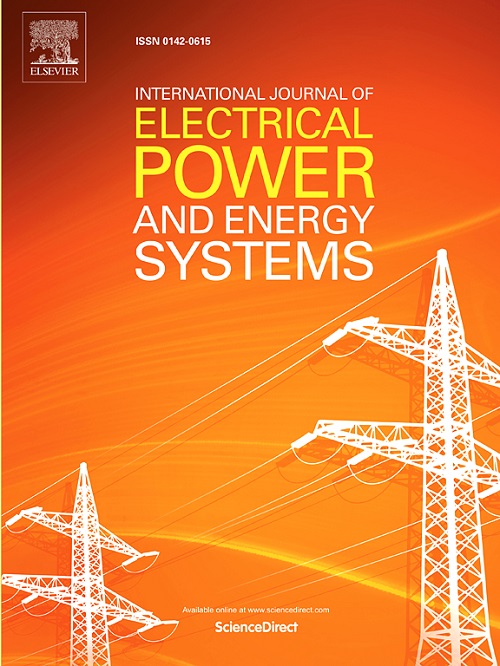基于物理指导的发电机脱扣控制的保守q学习
IF 5
2区 工程技术
Q1 ENGINEERING, ELECTRICAL & ELECTRONIC
International Journal of Electrical Power & Energy Systems
Pub Date : 2025-09-27
DOI:10.1016/j.ijepes.2025.111181
引用次数: 0
摘要
在具有高可再生能源渗透率的现代电力系统中,维持大扰动后的暂态稳定是一个关键挑战。发电机脱扣控制是缓解转子角度失稳的重要应急措施。然而,传统的强化学习方法缺乏物理可解释性和鲁棒性,限制了它们的操作接受度。为了解决这些问题,本文提出了一种新的基于物理信息的应急发电机脱扣保守q学习框架。具体来说,提出的方法将物理信息神经网络(PINN)与保守q -学习(CQL)集成在模块化框架中。一个基于两层长短期记忆的PINN,通过嵌入控制摆动方程来独立训练预测发电机转子角度轨迹,以确保物理一致性。同时,采用基于卷积神经网络的CQL智能体学习鲁棒发电机脱扣控制策略,并将PINN输出作为辅助动态特征,增强学习的稳定性和安全性。由物理信息轨迹聚类指导的动作掩蔽机制通过将决策限制在关键生成器上进一步提高了策略的鲁棒性。在一个改进的IEEE-39总线系统上对该方法进行了多故障场景下不同可再生能源集成水平的验证。此外,为了证明可扩展性和通用性,在更大更复杂的IEEE-118总线系统上进行了额外的验证。两个试验平台的结果表明,该方法显著提高了训练效率,增强了暂态控制性能,保证了稳定的部署行为,并降低了发电机跳闸成本。本文章由计算机程序翻译,如有差异,请以英文原文为准。
Conservative Q-learning with physics guidance for generator tripping control
Maintaining transient stability following large disturbances is a critical challenge in modern power systems with high renewable energy penetration. Generator tripping control serves as an essential emergency strategy to mitigate rotor angle instability. However, conventional reinforcement learning approaches lack physical interpretability and robustness, limiting their operational acceptance. To address these concerns, this paper proposes a novel Physics-Informed Conservative Q-learning framework for emergency generator tripping. Specifically, the proposed approach integrates physics-informed neural networks (PINN) with conservative Q-learning (CQL) in a modular framework. A two-layer long short-term memory-based PINN, independently trained to predict generator rotor angle trajectories by embedding the governing swing equations to ensure physical consistency. Meanwhile, a convolutional neural network-based CQL agent is employed to learn robust generator tripping control policies, where the PINN outputs are incorporated as auxiliary dynamic features to enhance learning stability and safety. An action masking mechanism guided by physics-informed trajectory clustering further improves policy robustness by restricting decisions to critical generators. The proposed method is validated on a modified IEEE-39 bus system under multiple fault scenarios with different levels of renewable energy integration. Furthermore, to demonstrate scalability and generalization, additional validation is performed on the larger and more complex IEEE-118 bus system. Results from both testbeds show that the proposed approach significantly improves training efficiency, enhances transient control performance, ensures stable deployment behavior, and reduces generator tripping costs.
求助全文
通过发布文献求助,成功后即可免费获取论文全文。
去求助
来源期刊
CiteScore
12.10
自引率
17.30%
发文量
1022
审稿时长
51 days
期刊介绍:
The journal covers theoretical developments in electrical power and energy systems and their applications. The coverage embraces: generation and network planning; reliability; long and short term operation; expert systems; neural networks; object oriented systems; system control centres; database and information systems; stock and parameter estimation; system security and adequacy; network theory, modelling and computation; small and large system dynamics; dynamic model identification; on-line control including load and switching control; protection; distribution systems; energy economics; impact of non-conventional systems; and man-machine interfaces.
As well as original research papers, the journal publishes short contributions, book reviews and conference reports. All papers are peer-reviewed by at least two referees.

 求助内容:
求助内容: 应助结果提醒方式:
应助结果提醒方式:


